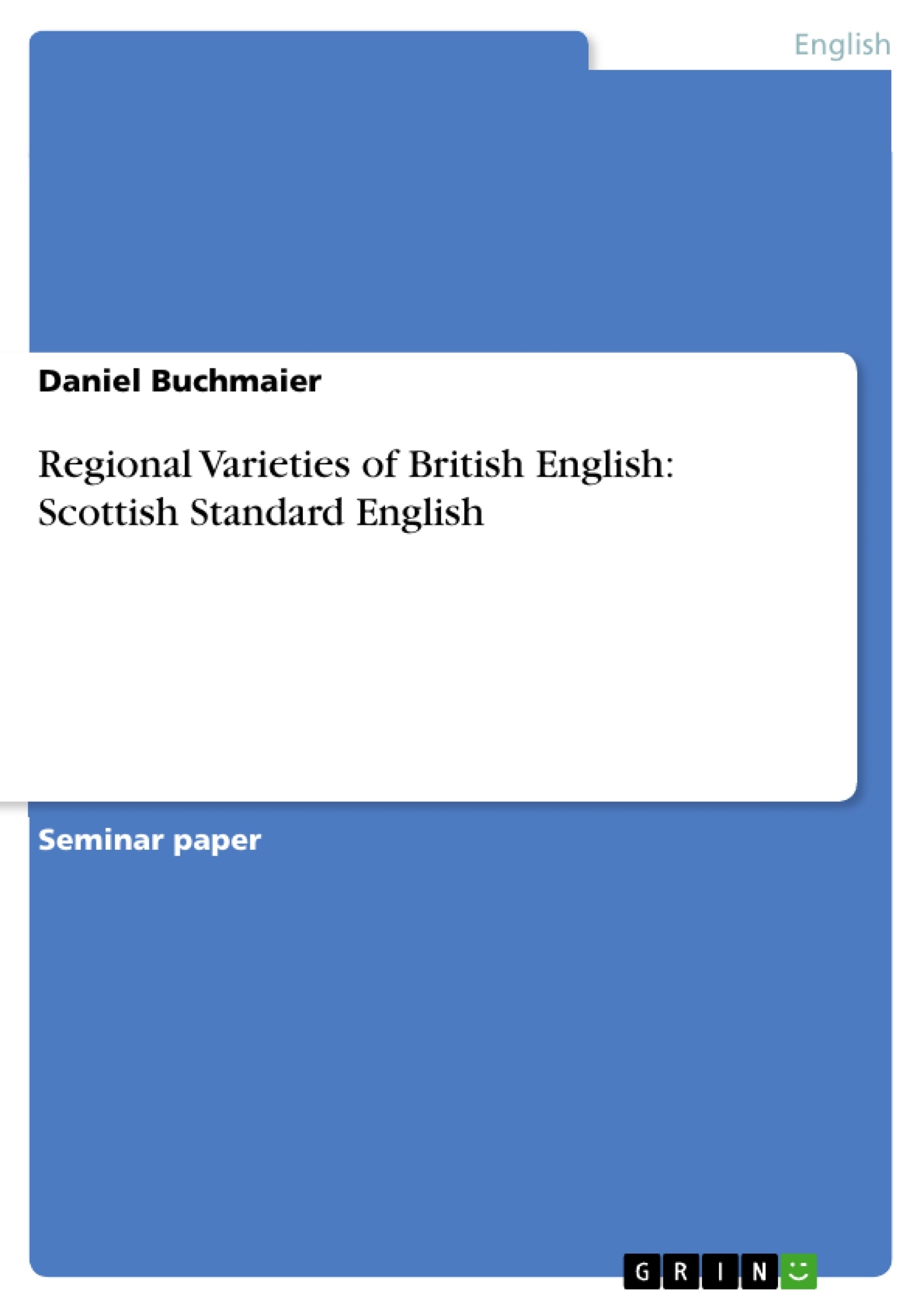1. Introduction
It's a braw bricht muin-licht nicht the nicht.
(literally: It's a beautiful bright moonlight night tonight.)
Kiddingly, Scottish people love to let English people try to pronounce this
sentence from Scots. For English people it is hard to pronounce the Scottish
sentence since it contains the /x/-phoneme that English Standard English does not
know. Therefore Scots is in the eyes of English Standard English Speakers a quite
foreign language. But what happens when the two languages – English Standard
English and Scots – merge and make up a new language, namely Scottish Standard
English? When did the influence of English on Scots start? How much of the
language heritage from Scots was imported into SSE? Which special features in
phonetic, grammar and lexis can be found? What other languages influenced SSE
and which so-called loanwords can still be found? This term paper will try to give
answers to these questions.
Therefore in (2.) will be given a definition of SSE in contrast to Scots. Then there
will be given a rough overview of the historical background and development of SSE
(3). Afterwards, certain differences of SSE and English Standard English in phonetic
(4.1), grammar (4.2) and lexis (4.3) will be described. Then there shall be given an
insight in SSE nowadays (5).
2.
Inhaltsverzeichnis (Table of Contents)
- Introduction
- Definition Scottish Standard English vs. Scots
- The History of Scottish Standard English
- Differences between English Standard English and SSE
- Phonology
- Vowel System
- Rhoticity
- Vowel length
- Consonants
- Grammar
- Differences in Tenses
- Negation
- Lexis
- Loan Words
- Phonology
- Scottish English today
- Conclusion
Zielsetzung und Themenschwerpunkte (Objectives and Key Themes)
This term paper aims to provide insights into the origins and characteristics of Scottish Standard English (SSE), highlighting its development as a distinct variety of English. The paper explores the historical interactions between Scots and English Standard English, examines the resulting phonological, grammatical, and lexical differences, and provides a contemporary overview of SSE.
- The historical development of SSE and its relationship to Scots
- Phonological differences between SSE and English Standard English
- Grammatical variations between SSE and English Standard English
- Lexical features of SSE, including loanwords
- The current status and use of SSE in Scotland
Zusammenfassung der Kapitel (Chapter Summaries)
The introductory chapter sets the scene by discussing the unique linguistic features of Scots and the challenges it presents for English speakers. It poses questions about the emergence of SSE and its characteristics, outlining the paper's objectives and structure.
Chapter two defines SSE and its distinction from Scots. It emphasizes the complex relationship between these two varieties, highlighting the influence of language contact and social factors on their usage.
Chapter three traces the historical evolution of SSE, examining the historical interactions between English and Scots in Scotland. It describes the gradual influence of English Standard English on Scots, particularly in the areas of literature, education, and official domains. This chapter provides a detailed account of the factors that contributed to the emergence of SSE.
Chapter four delves into the specific differences between SSE and English Standard English, focusing on the phonological, grammatical, and lexical aspects. It explores the variations in vowel systems, consonant sounds, verb tenses, negation, and lexical borrowings, shedding light on the distinctive features of SSE.
Schlüsselwörter (Keywords)
This term paper explores the linguistic variety of Scottish Standard English, focusing on its relationship to Scots, English Standard English, and the historical, social, and linguistic factors that shaped its development. Key terms include language contact, dialect variation, phonology, grammar, lexis, loanwords, historical linguistics, sociolinguistics, and language change.
- Quote paper
- Daniel Buchmaier (Author), 2010, Regional Varieties of British English: Scottish Standard English, Munich, GRIN Verlag, https://www.grin.com/document/183609




